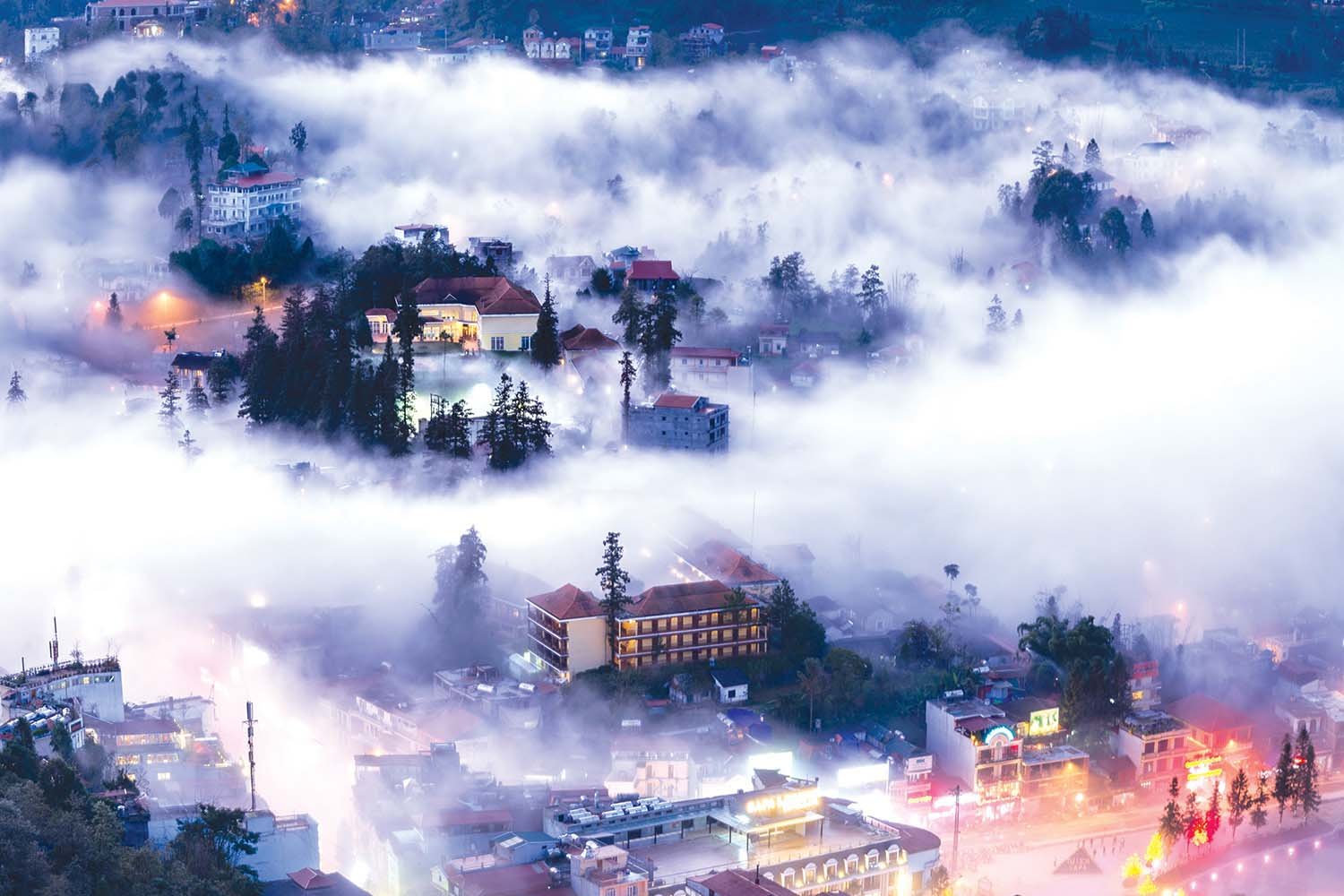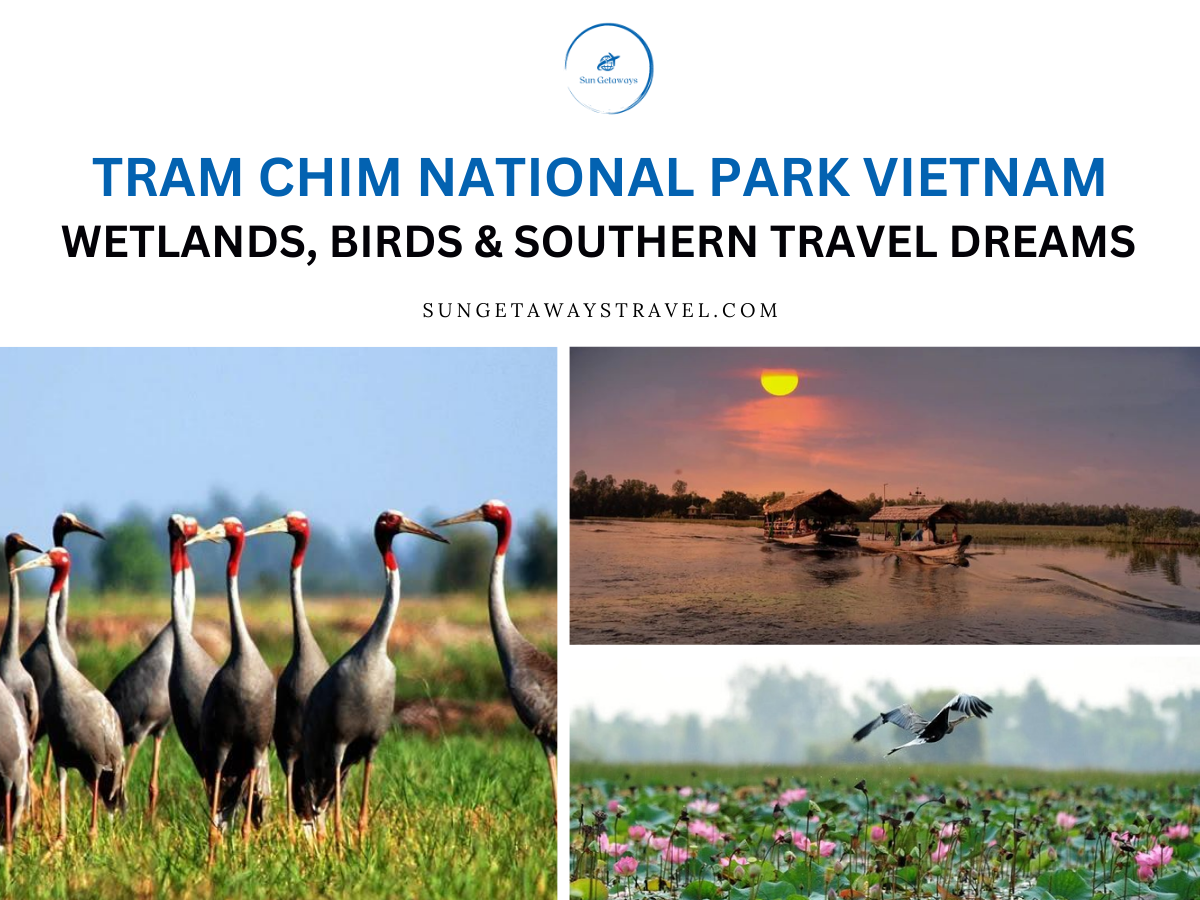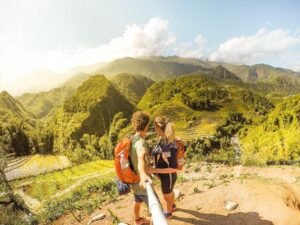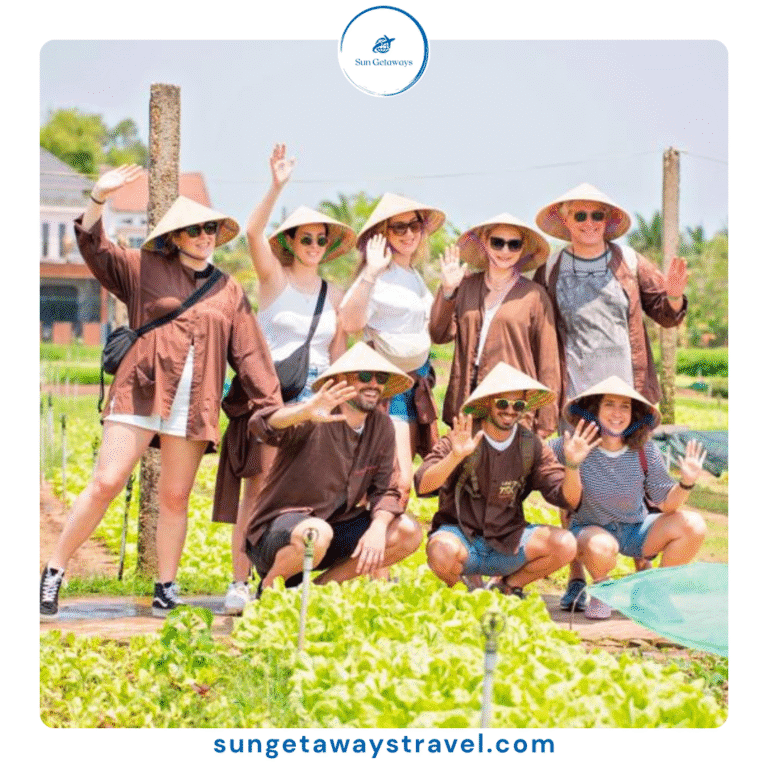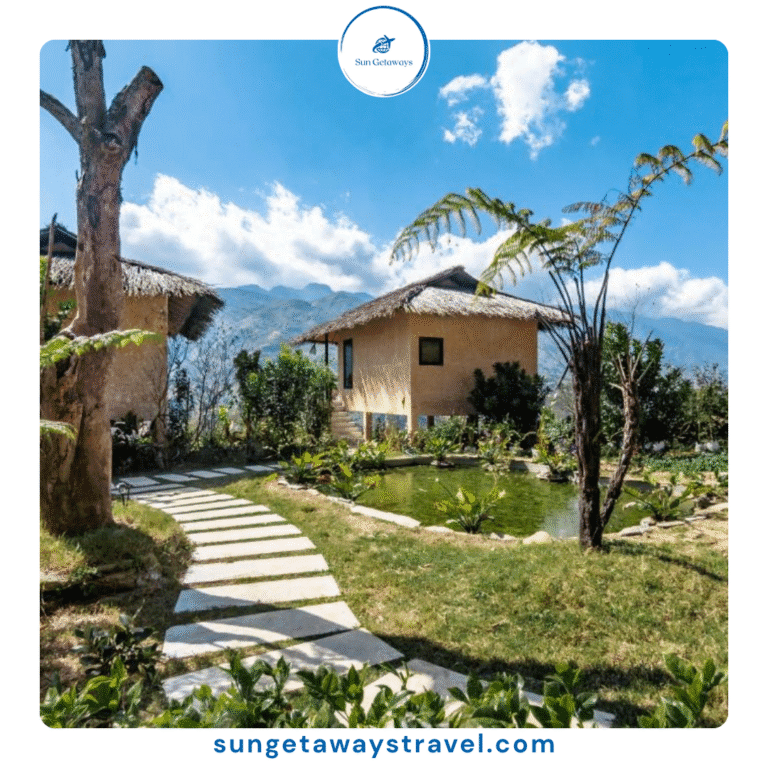Tram Chim National Park: Wetlands & Birds in Vietnam
 PhamDuong
PhamDuong Tram Chim National Park Vietnam is a living mosaic of wetlands, lotus fields, and migratory birds — a quiet jewel in the Mekong Delta that rewards slow, attentive travel. This protected area offers an accessible taste of Vietnam’s southern wetland ecosystems, where bird calls replace city noise and sunrise boat trips feel like a small pilgrimage. For nature lovers, photographers, and travelers who want to combine wildlife with local culture, Tram Chim is an unforgettable stop on any Mekong Delta itinerary.
1. Why Tram Chim National Park Is a Must-Visit in Vietnam
Located in Dong Thap Province, Tram Chim National Park Vietnam is one of the country’s most treasured wetlands and a sanctuary for rare birds. Recognized as a Ramsar site, the park preserves the unique ecosystem of the Mekong Delta. The park’s patchwork of marshes, canals, and lotus beds supports a wide range of wildlife – especially waterbirds – and it changes dramatically with the seasons. Visiting Tram Chim is less about ticking a sightseeing box and more about slowing down: watching flocks wheel at dawn, drifting past pink lotus blooms, and getting a sense of the Delta’s rhythm.
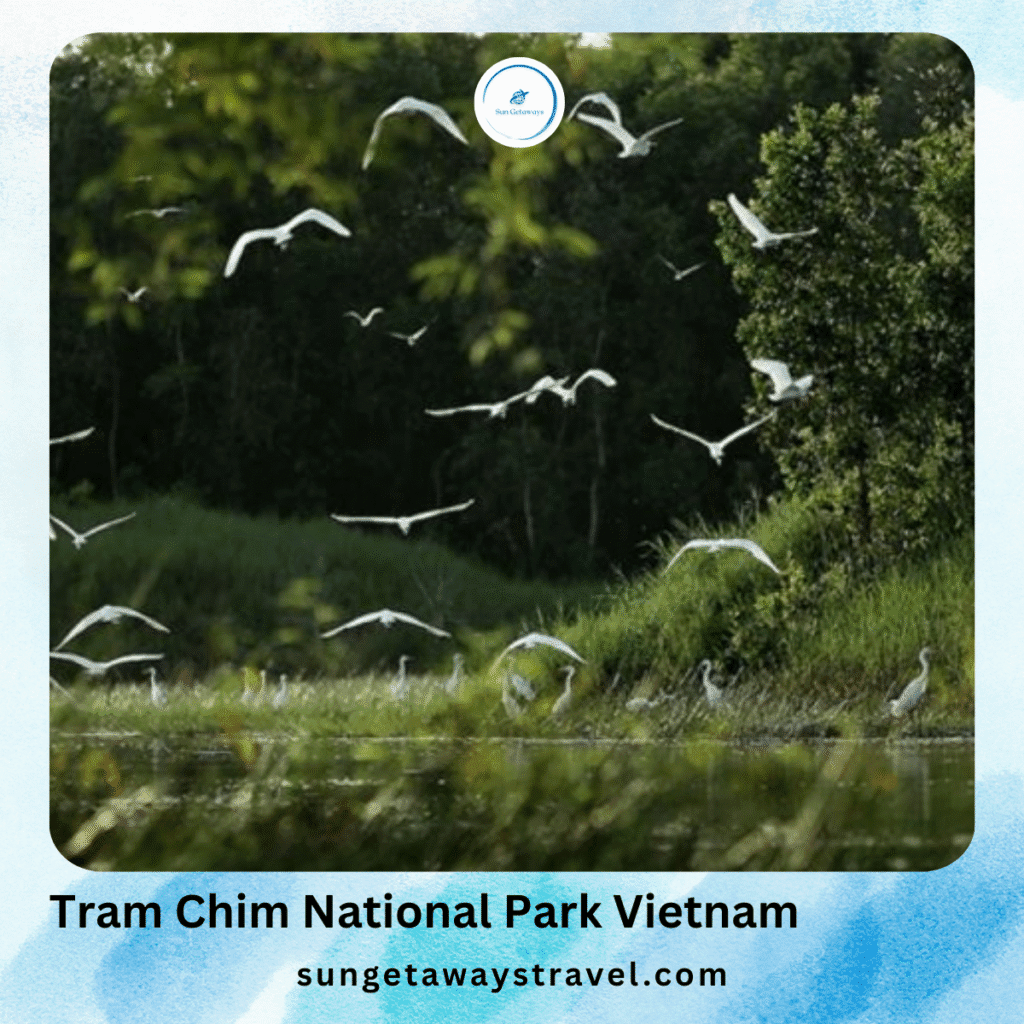

The park’s importance goes beyond wildlife. Local communities depend on these wetlands for fishing, small-scale farming, and cultural rituals tied to the river. In that way, a visit to Tram Chim National Park Vietnam is both ecological and social: it’s about birds and habitats as well as villages, markets, and the daily practices that tie people to water. Travelers who come here leave with a fuller picture of how landscapes and livelihoods are intertwined in southern Vietnam.
2. Best Time to Visit Tram Chim National Park
2.1. The Dry Season (December–April)
When planning your trip, timing is key. The best time to visit Tram Chim is usually between December and May. The dry season is drier and more open, making it easier to walk short trails and to spot large gatherings of birds in the rice fields and reed beds. Birdwatchers often prefer this season because flocks concentrate on remaining shallow waters and farmland pools, which improves visibility and photography opportunities. Cooler air and clearer skies also make sunrise and sunset more comfortable for long field sessions.
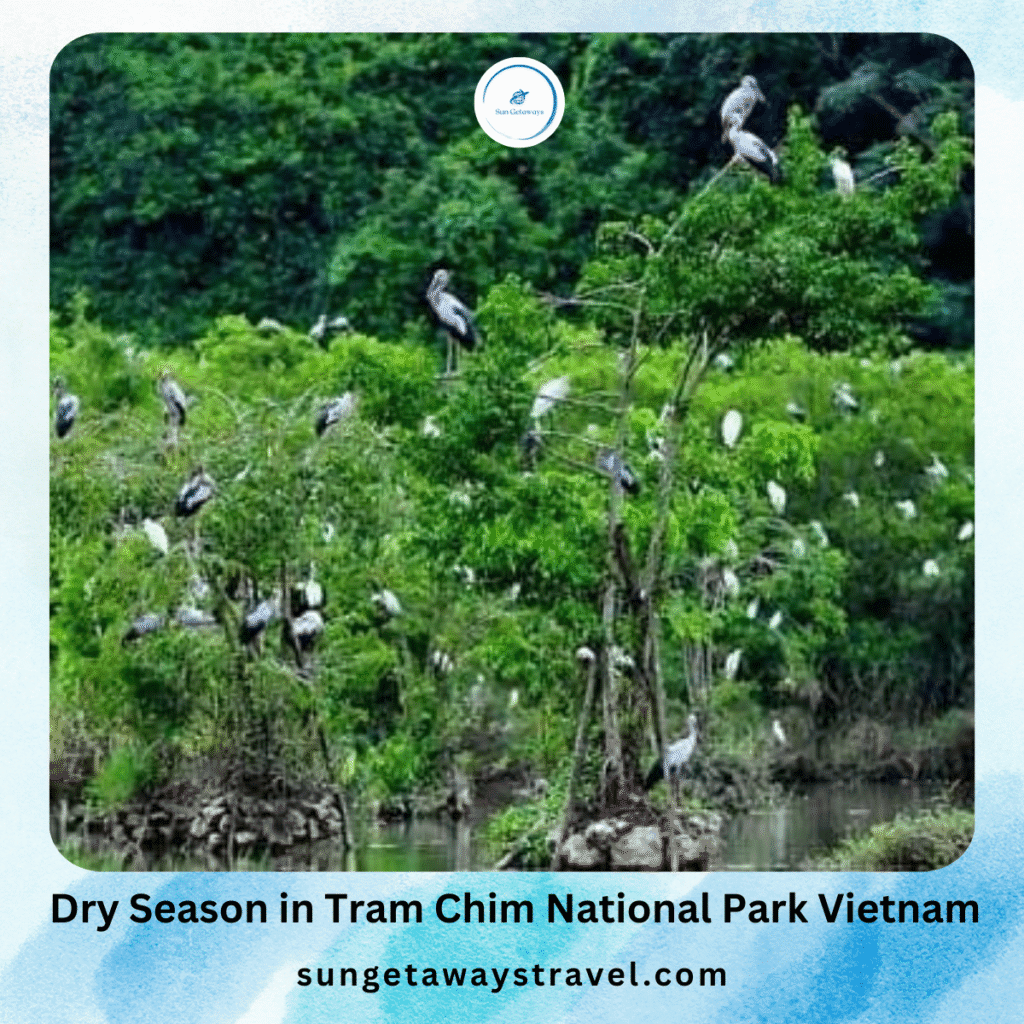

2.2. The Flooded Season (August–November)
The flood season (August to November) transforms the Mekong Delta into a magical maze of waterways. Canals deepen, aquatic plants flourish, and the landscape becomes a vast network of channels ideal for boat travel. This is a spectacular time for river journeys: the park seems to float on water, lotus and water lilies bloom across the surface, and waterbirds take full advantage of the expanded habitat to forage and nest.
While many birdwatchers consider the dry months the best time to visit Tram Chim, the rainy season has its own unique charm. Fields are submerged, fishermen cast their nets in tranquil waters, and lotus flowers burst into bloom. For travelers interested in local culture and the rhythm of delta life, the flood season offers a rich and immersive experience.
2.3. Choosing When to Visit (Photographers & Birdwatchers)
- If the priority is lotus photography and reflective waterways, aim for the flooded months when flowers and water surfaces are widespread.
- If the priority is concentrated birdwatching and easier terrain, choose the dry season for clearer sightings and more predictable roosting areas.
- For a balanced experience, visiting in transitional months (April/May or November/December) can combine good weather with interesting seasonal behavior.
👉 Start planning your tailor-made at Sun Getaways Travel and let your journey reflect exactly what you love.
2.4. How to Get to Tram Chim National Park
Accessibility is one of the reasons more visitors choose Tram Chim National Park Vietnam. If you’re wondering how to get to Tram Chim, the journey is straightforward from Ho Chi Minh City—about 3 to 4 hours by car or bus.
For international travelers, the typical route begins with a flight to Ho Chi Minh City, followed by a private car, shuttle, or organized tour. Some itineraries include stops at Cai Be floating market and Dong Thap lotus fields before arriving at the park, turning the trip into a scenic road adventure.
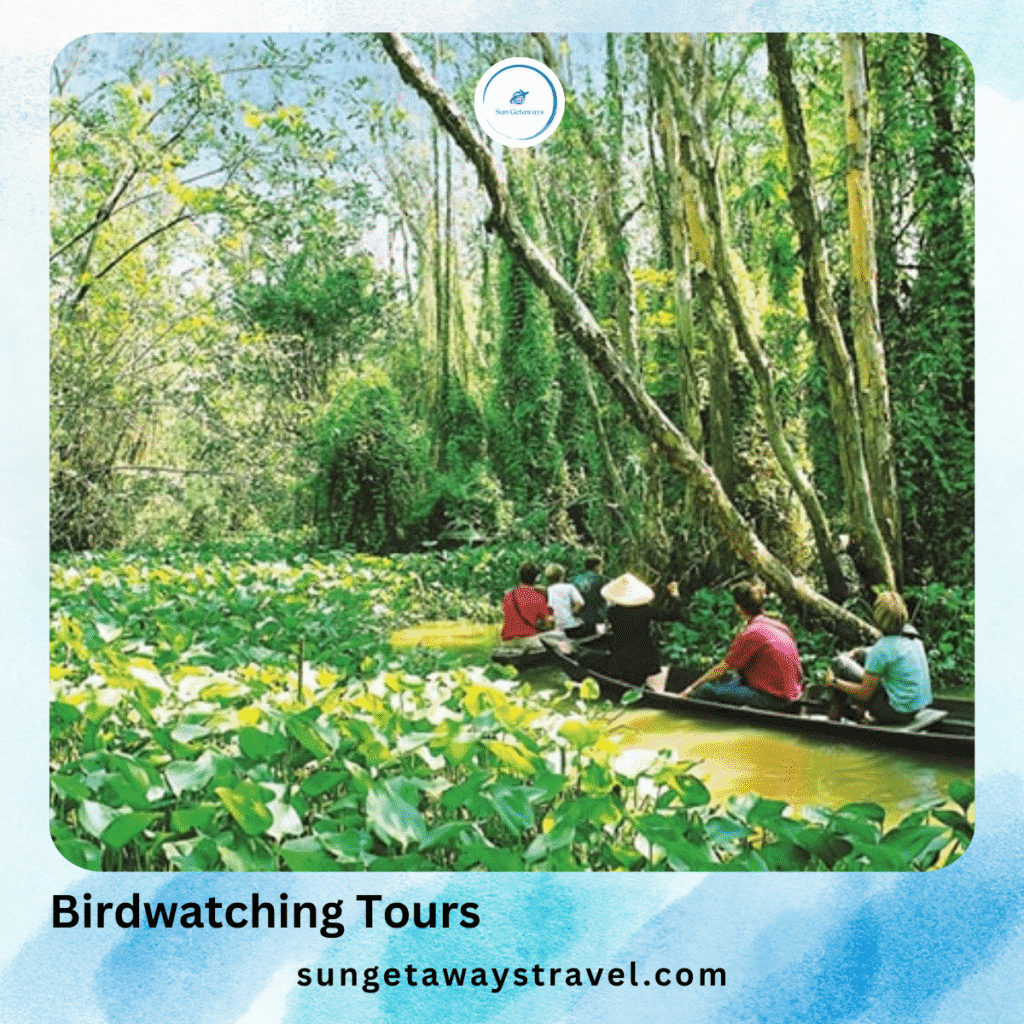

Budget travelers will find local buses from Ho Chi Minh City or Can Tho convenient and affordable. On the other hand, families and corporate groups often book private transfers for comfort and flexibility.
If you’re already traveling in the Mekong Delta, nearby towns like Cao Lanh offer easy access to the park. Many travel websites provide tips and directions, but the simplest option remains booking a tour package with transport included.
For first-time visitors, knowing how to get to Tram Chim helps streamline planning and ensures a smoother experience.
If you have any questions about visiting Tram Chim National Park or need quick assistance, feel free to contact us directly on WhatsApp.
3. Top Experiences in Tram Chim National Park
A trip to Tram Chim National Park Vietnam is not complete without experiencing its activities. Popular options include:
3.1. Birdwatching Tours
Tram Chim is famous for its birds. At dawn, flocks lift together and paint lines across the sky: storks, herons, egrets, and — when conditions are right — the taller, more solitary species that draw specialist birders. Guided birdwatching helps visitors find the best spots and reduces disturbance to sensitive nesting areas.
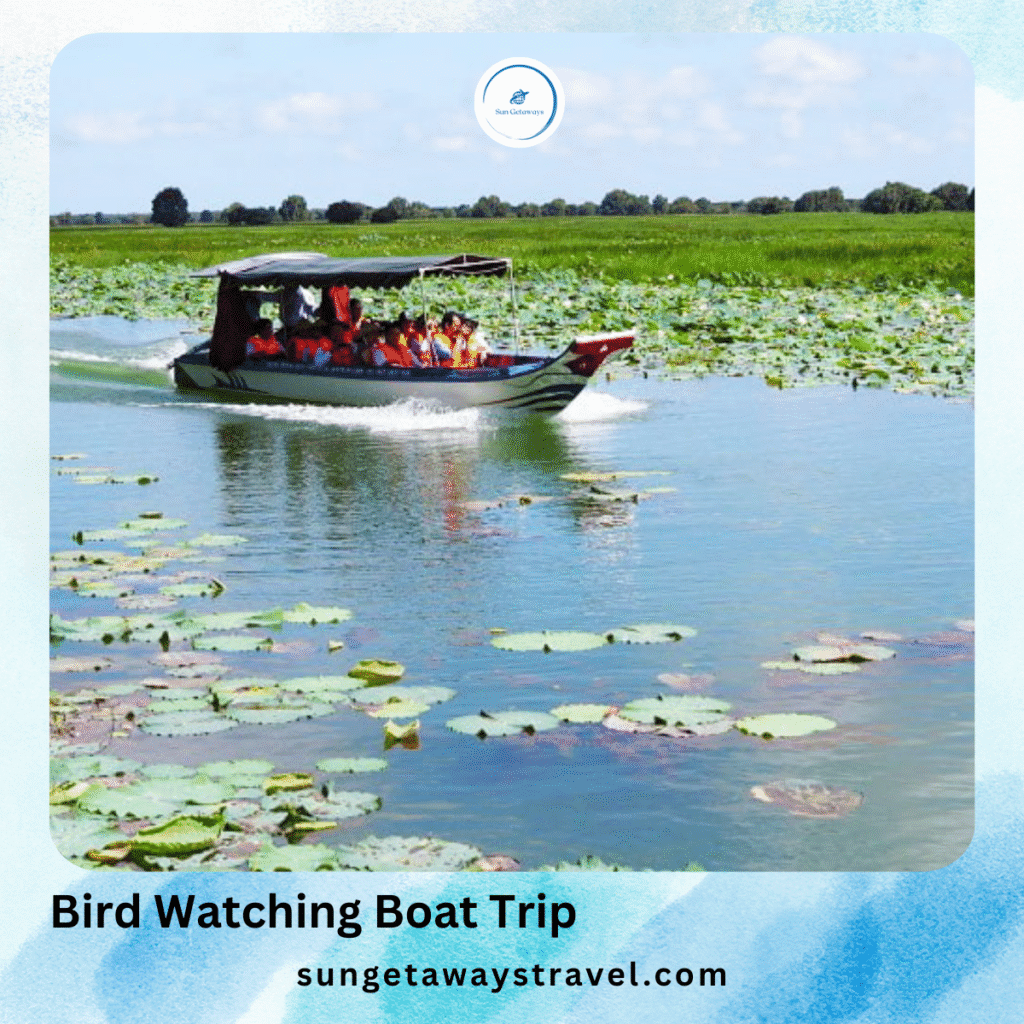

3.2. Boat Tours Through Lotus and Grasslands
A slow boat ride at sunrise or late afternoon is the signature Tram Chim experience. Boats wind through narrow channels, passing carpets of lotus and reed beds while the light changes. These trips are peaceful, intimate, and ideal for photography; the reflections at dawn can be spectacular.
3.3. Sunrise and Sunset Photography at Tram Chim National Park
Photographers should plan pre-dawn departures. Soft light and mirrored water set the stage for dramatic compositions: birds silhouetted against color, lotus blossoms edged with gold, and fishermen preparing nets. Sunset is equally rewarding, especially when clouds catch the last light over the wetland horizon.
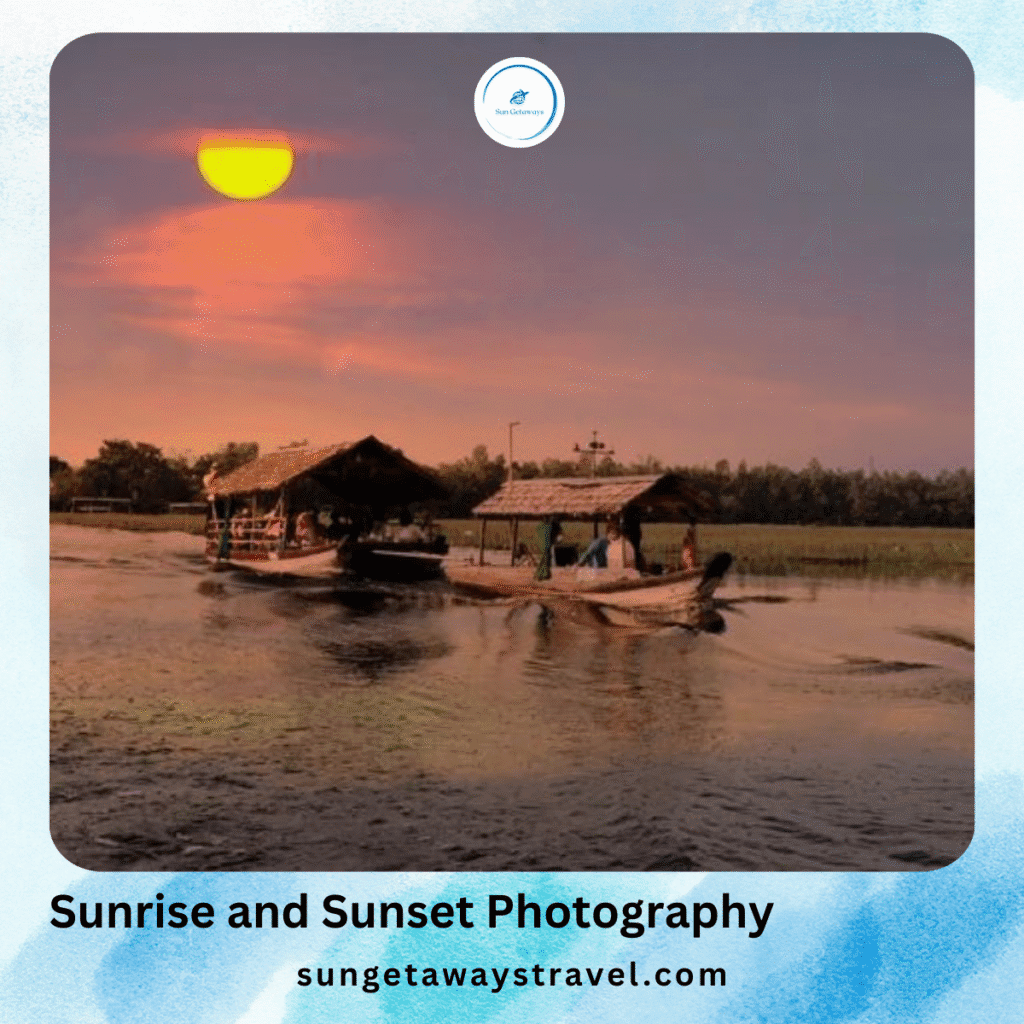

3.3. Community-Based Tourism & Homestays
Nearby villages offer homestays and local meals that enrich the park visit. Staying with a family allows groups to learn about traditional fishing, rice cultivation, and local cuisine — dishes made from freshly caught fish, regional herbs, and seasonal produce. These exchanges support local economies and create memorable cultural moments.
4. Travel Tips for Tram Chim National Park Visitors
Planning a trip is exciting—but a few smart travel tips can make the journey smoother, safer, and more memorable. Whether you’re heading to the mountains, the coast, or a bustling city, knowing what to pack, when to go, and how to move around can save you time and stress. From choosing the right season to understanding local customs, small details often make a big difference. Check out our essential tips and guides to help you explore Vietnam with confidence:
4.1. What to Pack for Your Trip to Tram Chim National Park
- Binoculars and a telephoto lens for birdwatching and wildlife photography.
- Lightweight long sleeves and a hat to guard against sun and mosquitoes.
- Waterproof shoes or sandals that you don’t mind getting muddy, especially during flood season.
- Sunscreen and insect repellent, and a refillable water bottle.
4.2. Responsible Travel Practices
- Keep a respectful distance from nesting birds and sensitive habitats.
- Avoid loud noises and flash photography near wildlife.
- Take all rubbish with you and favor reusable items to reduce plastic waste.
- Support local guides and homestays directly — this keeps tourism sustainable..
4.3. Entrance and Guide Options
The park has a visitor center and an entry process; hiring a local guide or joining a small tour increases the odds of good sightings and helps interpret the landscape. Guides know seasonal hotspots, transit logistics, and safe practices around water and wildlife.
4.4. E-SIM Travel Tip
Stay connected easily with a 5GB/day E-SIM valid for 30 days—perfect for maps, translation, and sharing your journey. No need to swap SIM cards, just activate instantly. Make sure your phone supports E-SIM before purchase.
5. Combine Tram Chim National Park with Other Southern Trips
5.1. Quick Day-Trip Combinations from Ho Chi Minh City
If traveling from Ho Chi Minh City, many visitors plan Tram Chim as a one-day or two-day extension. Typical combinations include a morning drive out, a boat trip at dawn, and an afternoon visit to a nearby flower village or market. For travelers short on time, a guided one-day tour can deliver the highlights with minimal planning.
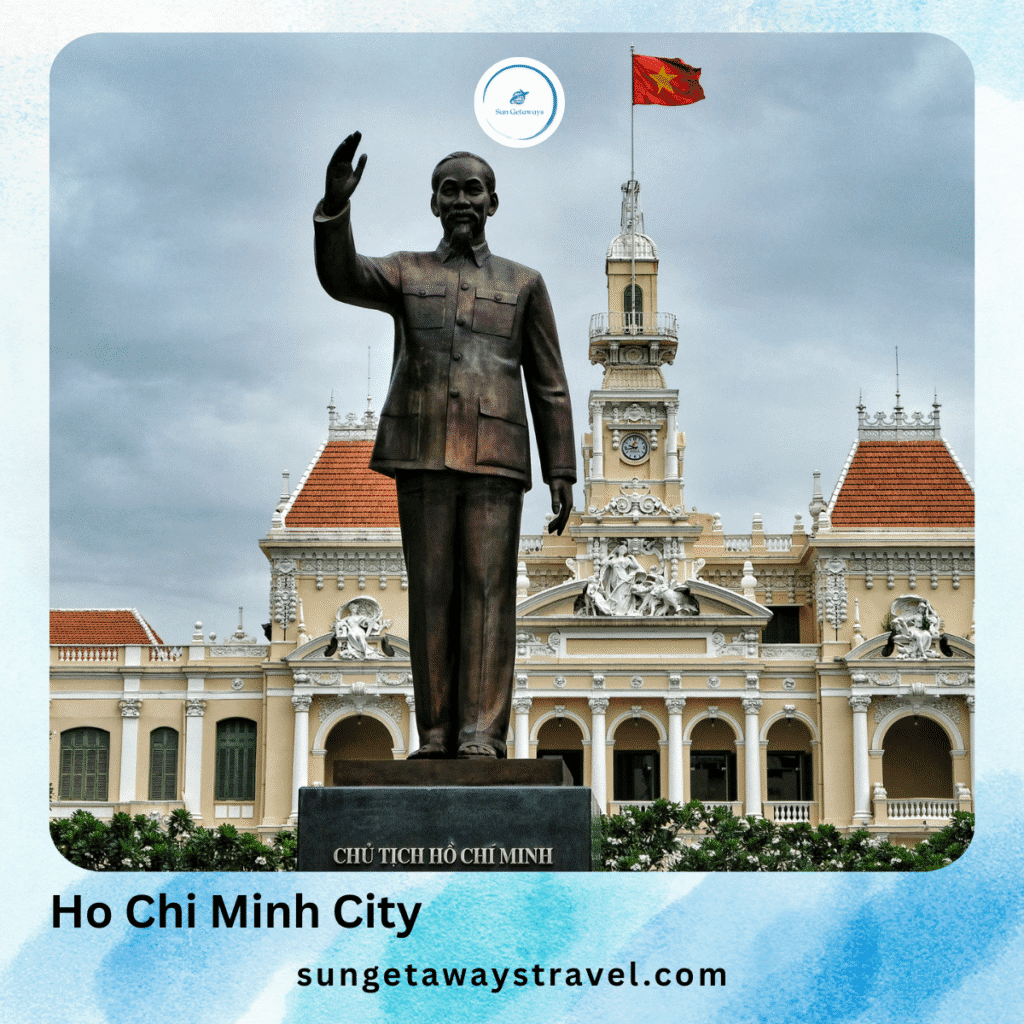

5.2. Multi-Day Mekong Delta Circuits
Exploring the Mekong Delta is also a great choice. Longer itineraries allow deeper immersion: combine Tram Chim with stops in Sa Dec (flower village), Cao Lanh (local markets), Can Tho (floating markets), or Tra Su (another renowned tram forest). These circuits balance wildlife, local culture, and market life, offering a fuller Mekong Delta picture.
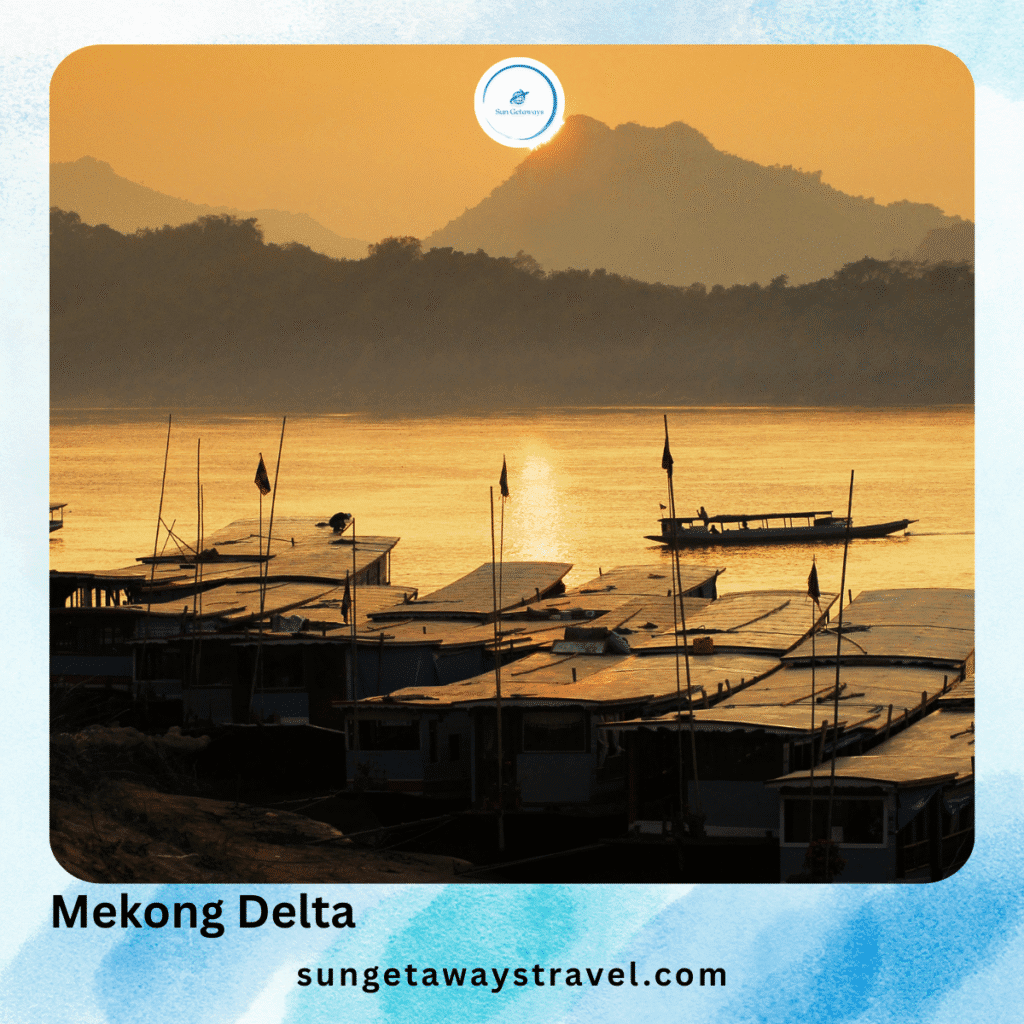

Suggested Add-Ons for Nature Lovers
- Tra Su Cajuput Forest (An Giang): spectacular for canoe trips and birdlife.
- Xeo Quyt: a wartime relic and nature patch nearby that gives a historical contrast.
- Sa Dec Flower Village: seasonal blooms and a glimpse into horticultural traditions.
6. Practical Sample Itineraries
Half-Day Birdwatching Escape (for short itineraries)
- Pre-dawn pickup from a nearby town or hotel.
- Sunrise boat trip through core bird habitats (2–3 hours).
- Late morning return, with a stop at a local market or café.
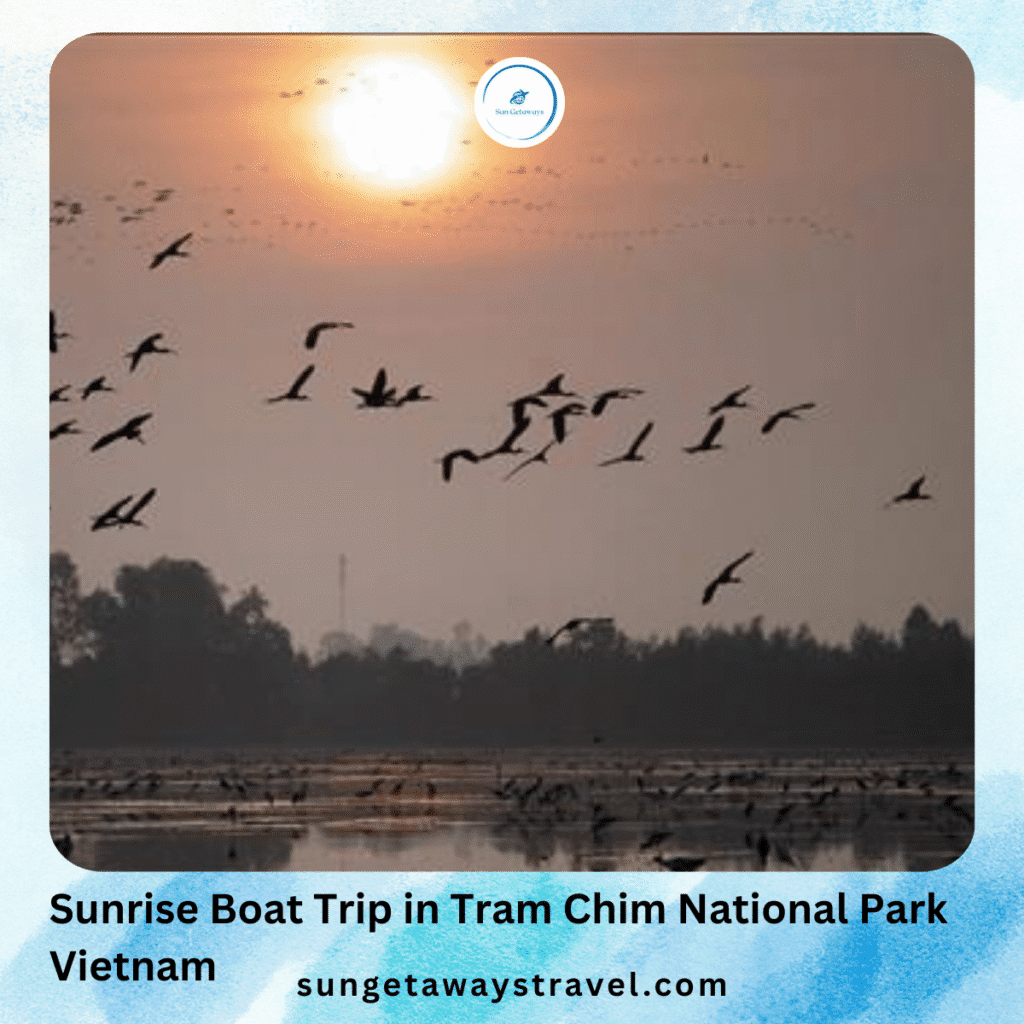

Full-Day Combo: Nature + Culture
- Early morning: birdwatching boat tour in Tram Chim.
- Late morning: transfer to Sa Dec for market and flower village exploration.
- Afternoon: homestay lunch and short cultural visit.
- Evening: return to base or stay overnight in a nearby guesthouse.
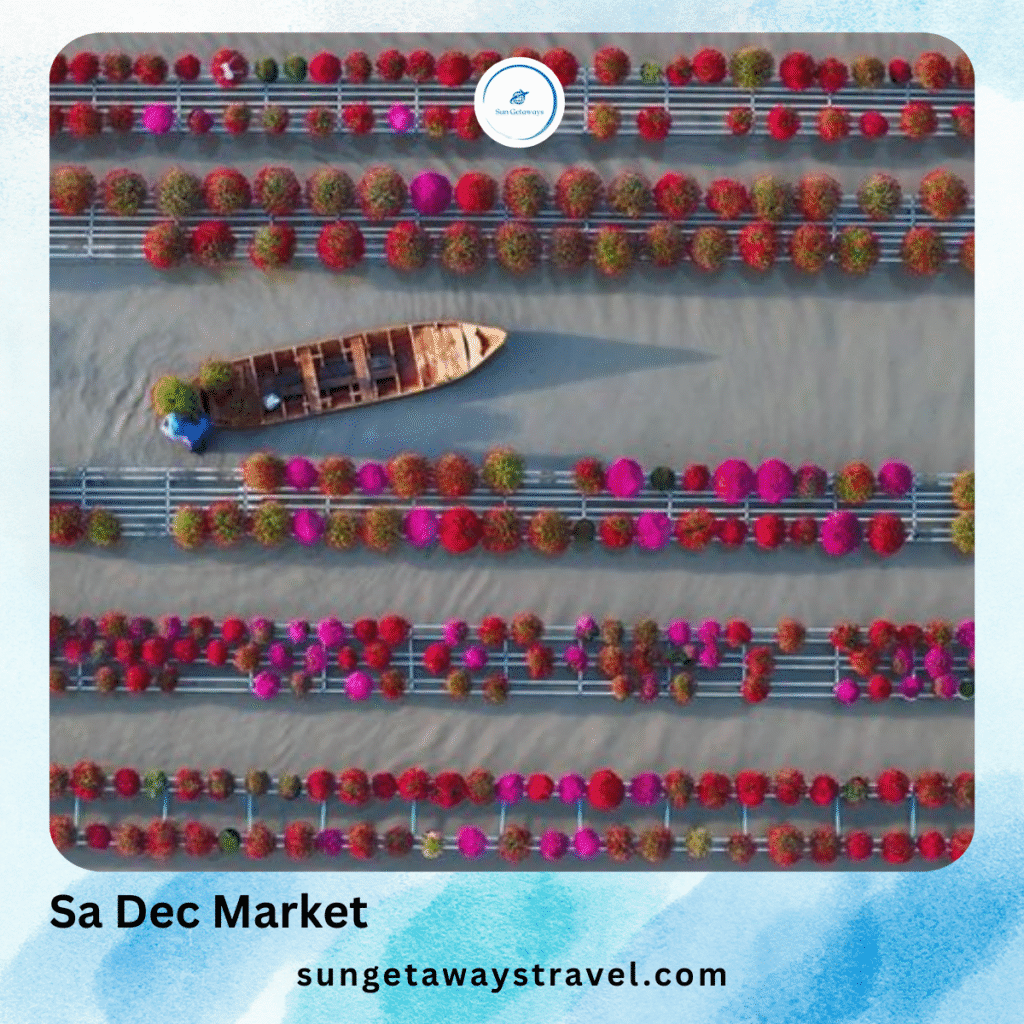

Two-Day Delta Immersion
- Day 1: travel to Tram Chim, sunset boat trip, homestay.
- Day 2: dawn birdwatching, visit local workshops or floating market, return.
7. Special Notes for Photographers and Birders
- Use a tripod for low-light dawn and dusk shots, but be mindful of uneven ground on boats or platforms.
- Respect nesting seasons: avoid crossing into cordoned areas; consult guides about sensitive locations.
- Practice patience: the wetlands reward slow observation — a bird’s unexpected behavior can become the highlight of the day.
- Carry spare batteries and memory cards — power and storage are essential when wildlife is abundant.
8. Conservation, Community, and the Future of the Wetland
Tram Chim’s long-term health depends on balancing tourism, conservation, and local livelihoods. Park rangers and community groups work to monitor bird populations and protect habitat. Responsible visitors can help by choosing guided tours that contribute to local conservation funds or by staying with homestays that support community development.
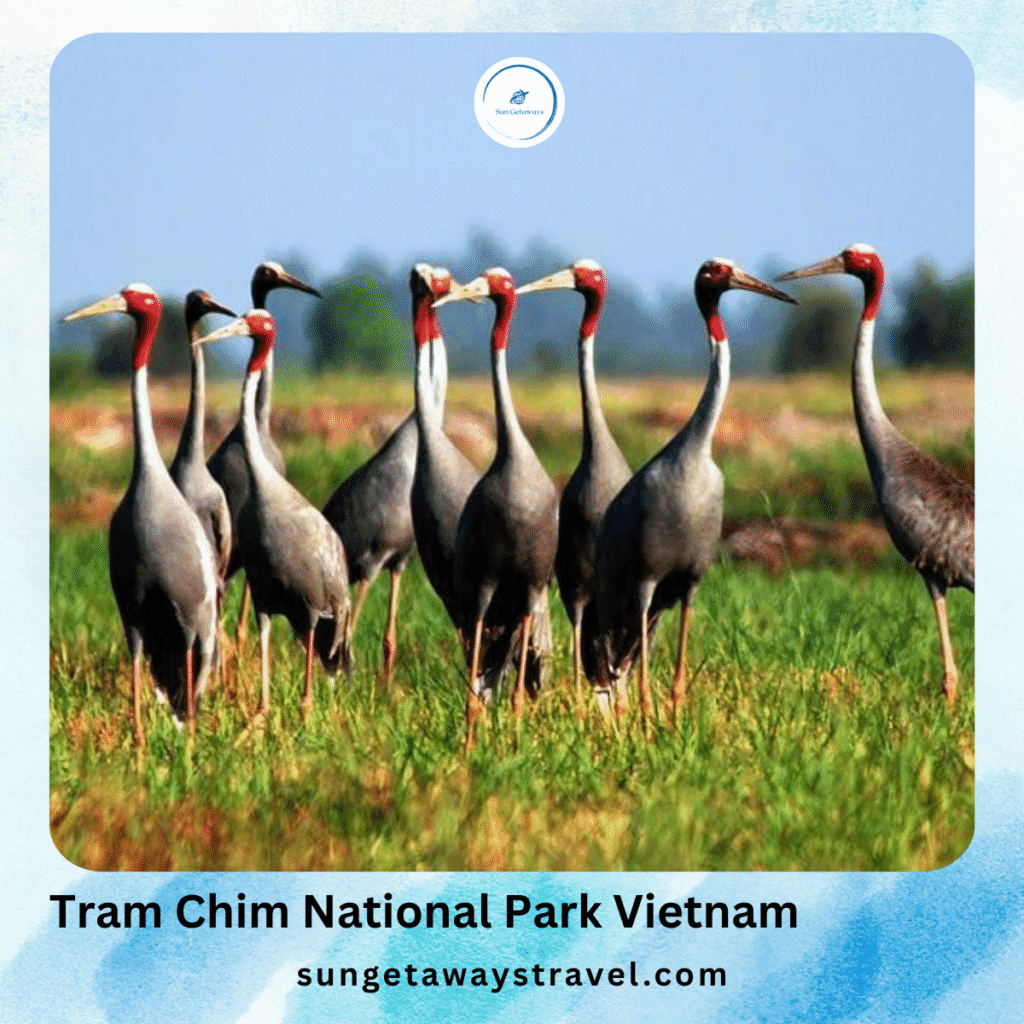

Climate variability and water management upstream influence the Mekong Delta’s hydrology, which in turn affects Tram Chim’s seasonal cycles. Supporting sustainable tourism — low-impact travel, local guides, and community benefits – helps ensure that future visitors can experience the same wonders.
FAQs – Tram Chim National Park Vietnam
1. What is the best time to visit Tram Chim?
The best time to visit Tram Chim is December–May for birdwatching, though August–November offers flood season scenery.
2. How to get to Tram Chim from Ho Chi Minh City?
If you’re asking how to get to Tram Chim, you can take a bus, private car, or join a tour from Ho Chi Minh City, usually taking 3–4 hours.
3. Why is Tram Chim National Park Vietnam famous?
It’s known for its wetlands ecosystem, over 230 bird species, and recognition as a Ramsar site.
4. Can I visit all tombs in one day?
Yes, a day trip is possible, especially if you know how to get to Tram Chim in advance, but staying overnight allows for deeper exploration.
5. Is Tram Chim suitable for families or groups?
Absolutely. The gentle boat rides, birdwatching, and scenic landscapes make Tram Chim National Park Vietnam a group-friendly destination.
Conclusion
Exploring Tram Chim National Park Vietnam is more than a nature trip—it’s an immersion into the heart of the Mekong Delta. Whether you plan carefully around the best time to visit Tram Chim or take time to understand how to get to Tram Chim, your journey will reward you with beauty, wildlife, and cultural depth. For solo adventurers, families, or corporate groups, Tram Chim National Park Vietnam promises unforgettable experiences, proving that Southern Vietnam’s wetlands are as enriching as they are breathtaking.
If you’re dreaming of a personalized adventure through the peaceful wetlands of Tram Chim National Park, why not design a tour that fits your pace and interests? Whether you want to focus on birdwatching at sunrise, explore lotus-covered canals by boat, or combine your visit with nearby cultural spots in Dong Thap, a custom itinerary can make your experience truly unforgettable.
Ask a question
Leave a Comment (0)
No questions yet. Be the first to ask a question!





